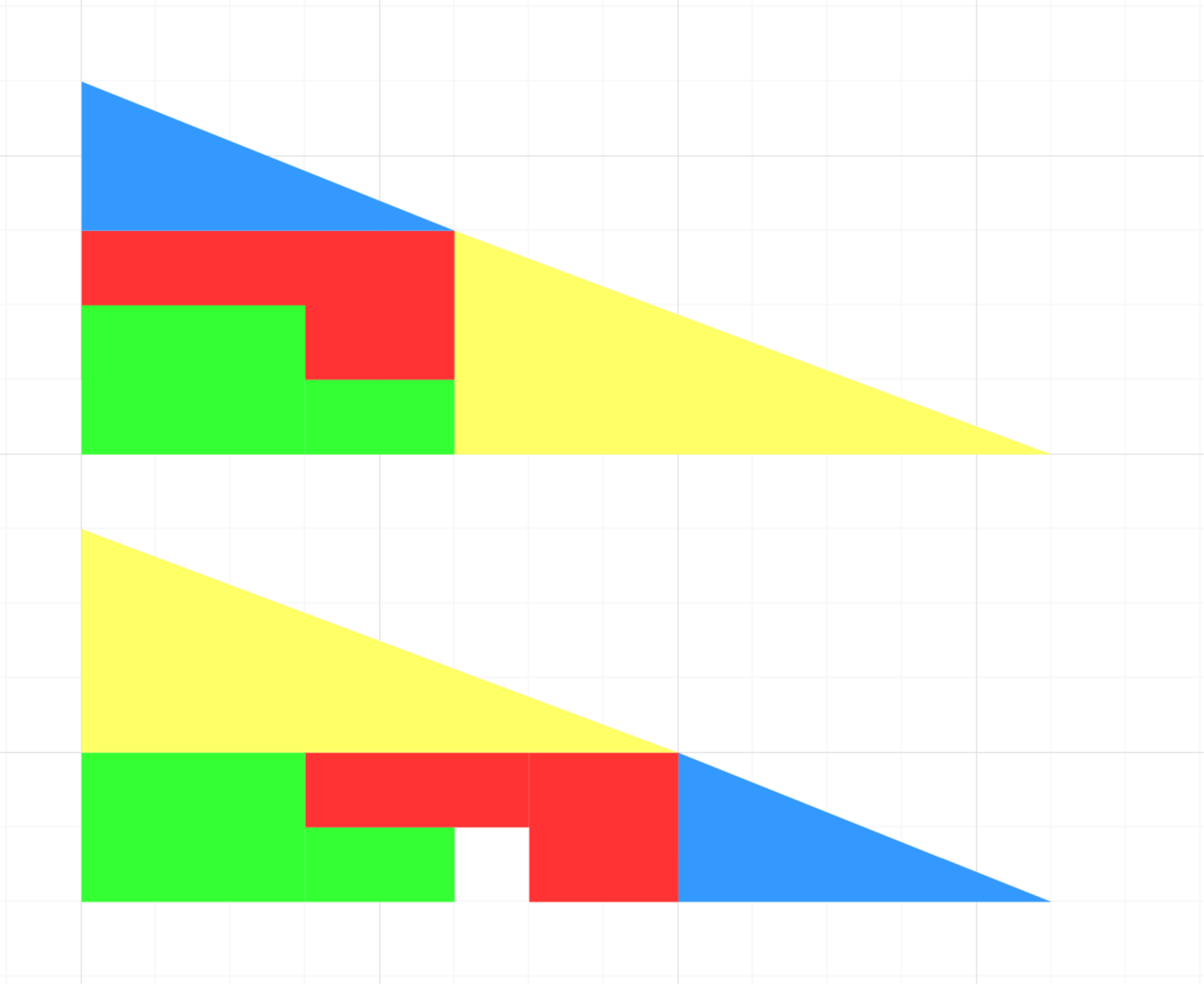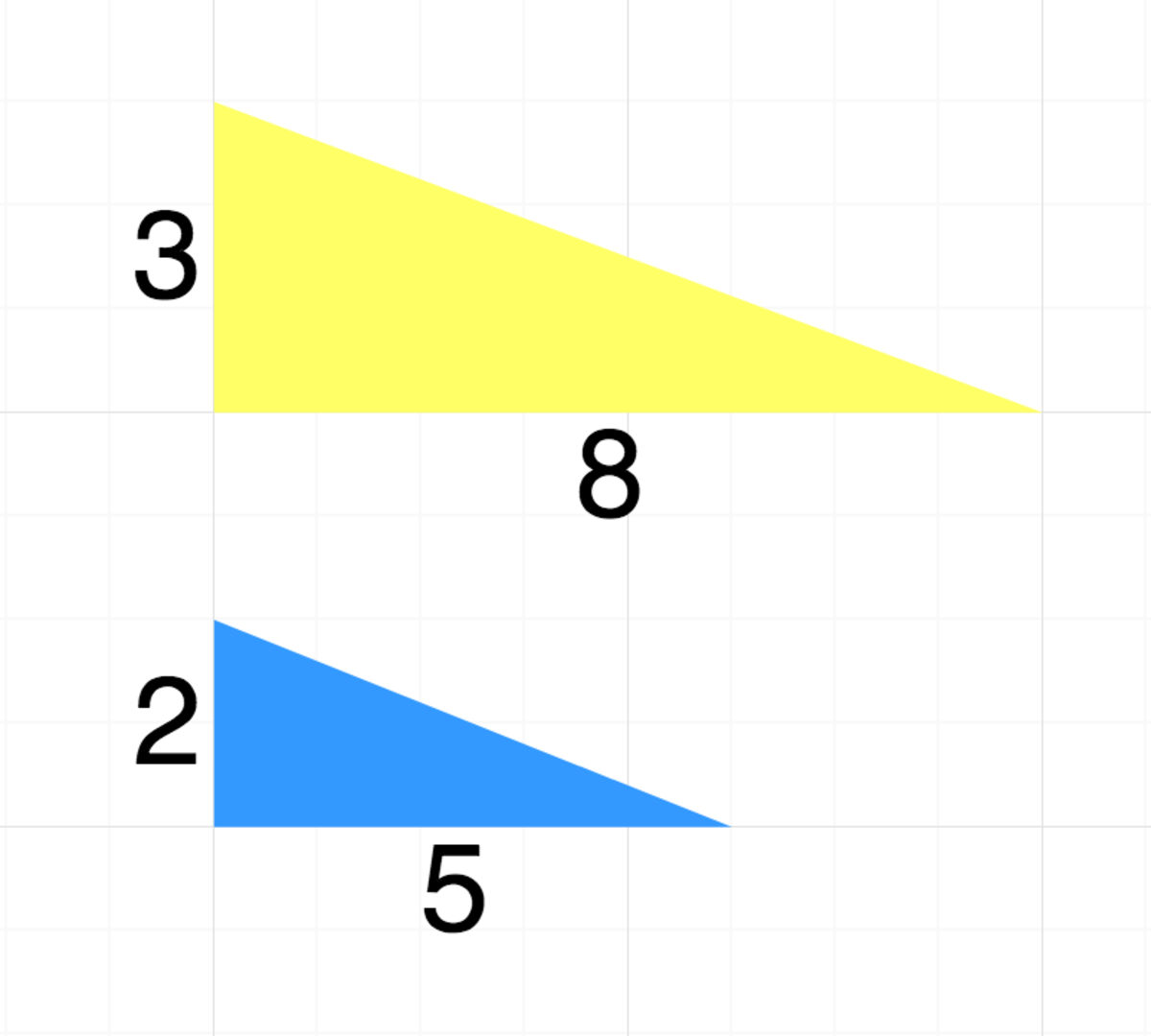What's with the hole?
Geometry
Level
3
These two shapes seemingly have the "same" parts. What's the trick?

Source: Ripley's Believe It Or Not
The parts aren't the same.
The pieces are slightly adjusted to make it look like they have right angles.
The two legs of both shapes (assuming the hole was filled) do not form right angles.
There is no trick, we were just misguided as kids.
The length of their hypotenuses (assuming the hole was filled) aren't the same.
They aren't triangles (assuming the hole was filled).
The gridlines are skewed.
This section requires Javascript.
You are seeing this because something didn't load right. We suggest you, (a) try
refreshing the page, (b) enabling javascript if it is disabled on your browser and,
finally, (c)
loading the
non-javascript version of this page
. We're sorry about the hassle.

A straight line has been added for comparison. It seems to be only very slightly above and below the edge of the shape respectively, which explains the illusion. But the calculation below shows that this is enough.
The actual area of the colored “triangle” on top is
2 1 × 2 × 3 + 3 + 2 × 2 + 3 × 2 + 2 + 2 1 × 3 × 8 = 3 2
The area of the actual triangle would be
2 1 × 5 × ( 5 + 8 ) = 3 2 . 5
And the area of the bottom colored “triangle” with the hole filled is
2 1 × 2 × 3 + 3 + 2 × 2 + 3 × 2 + 2 + 2 1 × 3 × 8 + 1 = 3 3
So the numbers bear it out.